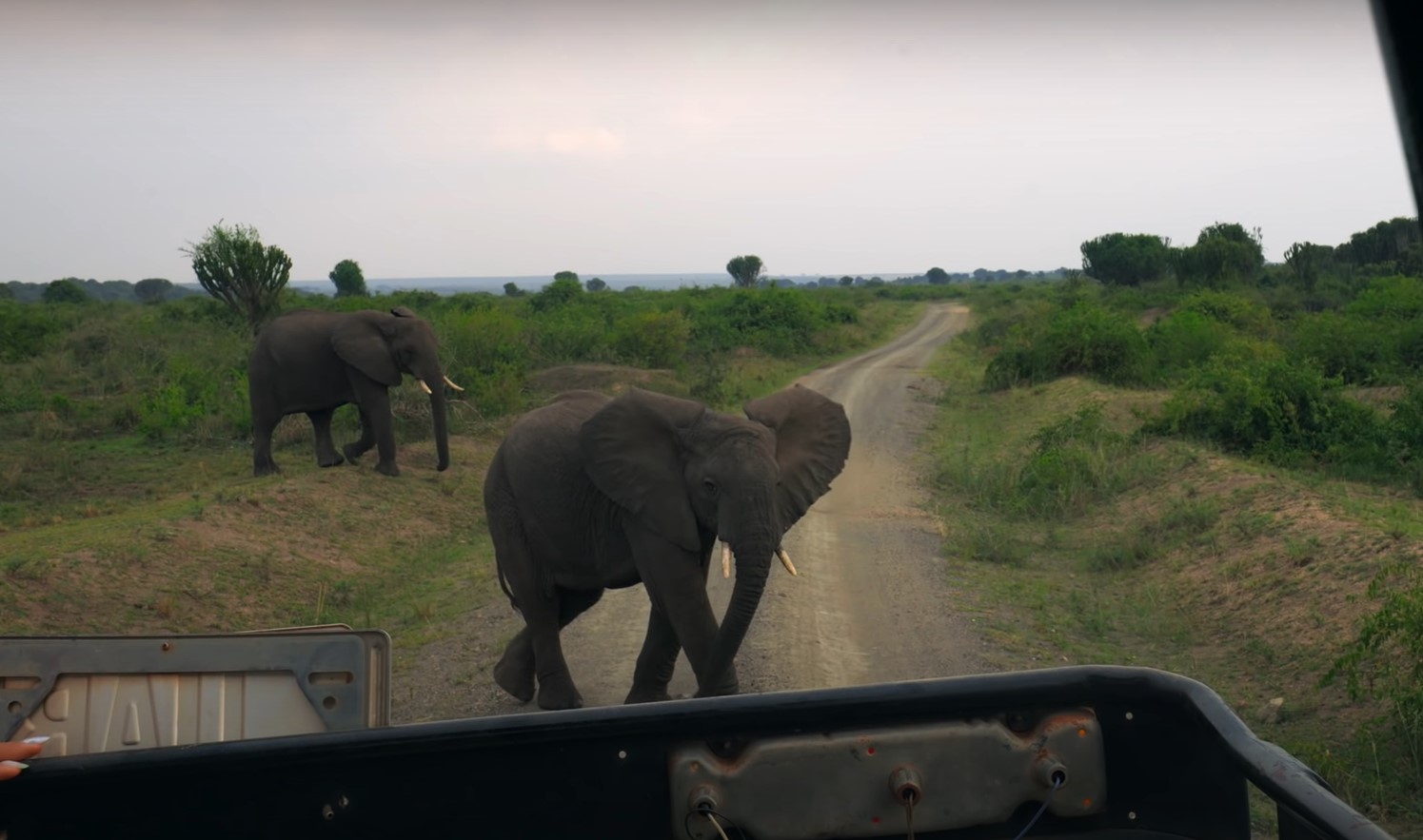Queen Elizabeth National Park: Beginners travel guide and Fees
Queen Elizabeth National Park was officially formed along with Murchison Falls National Park in 1952; the park is one of the oldest in Uganda and was initially known as Kazinga National Park before it was renamed Queen Elizabeth National Park in 1952 to commemorate a visit made by Queen Elizabeth II of Great Britain. This guide is about Queen Elizabeth National Park in Uganda, and it covers the attractions of this park, things or activities done in it, and the park’s location.
Queen Elizabeth National Park is located in the western region of Uganda, spanning the districts of Kasese, Rubirizi, Kamwenge, and Rukungiri. This park covers a total land area of 1,978 sq km. The park is southwest of Kampala, the capital city of Uganda, and this is approximately 400 km.
As earlier said, this park was founded in 1952 as Kazinga National Park and combined Lake George and Lake Edward game reserves but later was renamed. Queen Elizabeth is one of Uganda’s most popular tourist destinations. It adjoins the Kyambura game reserve to the east, from which itself adjoins the Kigezi game reserve, including the Maramagambo forest; thus, Kibale National Park to the northeast, and Virunga National Park of Congo lies to the border in the far west. These protected areas together completely encircle Lake Edward and Rwenzori Mountains National Park.
This unspoiled destination has about 95 mammal species, including big game. Some of animals in Queen Elizabeth include elephants, hippos, antelopes, kobs, and endangered chimpanzees. There are a lot of attractions in this park as well as activities. The activities include game drives, night drives, nature walks, exploring crater lakes and salt mines, and boat rides on the Kazinga channel, among others.

The tree-climbing lions have made the Ishasha sector of Queen Elizabeth very famous, with just two populations of these unique lions. You can explore the southern Ishasha sector to track these lions commonly seen up in the fig and acacia trees.
The Kazinga channel connects Lake Albert and the Gorge and is home to many hippos, Nile crocodiles, and elephants, which are easily seen on a thrilling Kazinga boat ride. The Kasenyi plains are also not to be missed while on Queen Elizabeth National Park safari since they are home to many antelopes, lions, and several other large predators.
Do not miss out on Kalinzu Forest, which offers exhilarating chimpanzee tracking experiences and is on the southeastern corner of this fantastic park. The verdant forested Kyambura gorge, with a 100-meter-deep valley with peculiar, is home to large numbers of primates and a population of chimpanzees.
Mweya peninsular is another stretch of land that protrudes into Lake Edward. It is also interesting to visit during game drives, as it offers a perfect game view while exploring various game tracks. The Craters are another adventure while on a safari; these crater lakes are found in the northern parks on the park’s highest elevation. Tourists can enjoy sweeping views of the Rwenzori mountain ranges, lake George and Edward, and the Rift Valley escarpments.
It is home to over 618 bird species, making it the 6th highest diversity in the world and the highest in Africa; This means that Queen Elizabeth National Park is the number one destination for all birding safaris in Africa.
The best time to visit Queen Elizabeth National Park is in the dry season, which runs from January to February, and from June to September is the best time to visit. Still, it is also the peak safari time in Uganda from June to September, while migratory species arrive in August to December and March to May, offering bird lovers the best time. The park can be accessed by both road and flight. You can drive from the capital, which is 389km, and it takes 6 hours and 30 minutes to reach the park via Masaka Road.

